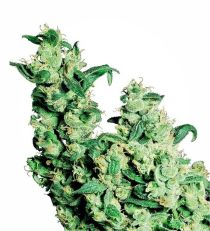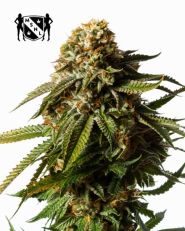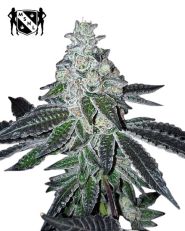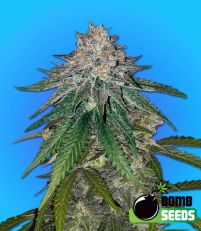 Zkittlez Gum Bomb Feminized - Bomb Seeds By Bomb SeedsFrom: US$42.24
Zkittlez Gum Bomb Feminized - Bomb Seeds By Bomb SeedsFrom: US$42.24- THC: Over 22%
- Yield: 500-600gr/m²
- Flowering Time: 10-12 Weeks
New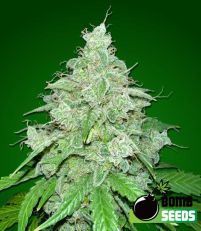 THC Fritters Autoflower - Bomb Seeds By Bomb SeedsFrom: US$42.24
THC Fritters Autoflower - Bomb Seeds By Bomb SeedsFrom: US$42.24- THC: Over 25%
- Yield: 300-400gr/m²
- Flowering Time: 8-10 Weeks
New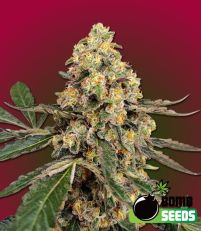 THC Fritters Feminized - Bomb Seeds By Bomb SeedsFrom: US$42.24
THC Fritters Feminized - Bomb Seeds By Bomb SeedsFrom: US$42.24- THC: Over 25%
- Yield: 400-500gr/m²
- Flowering Time: 8-10 Weeks
New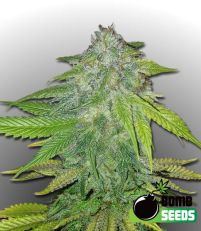 Ghost Train Bomb Feminized - Bomb Seeds By Bomb SeedsFrom: US$48.84
Ghost Train Bomb Feminized - Bomb Seeds By Bomb SeedsFrom: US$48.84- THC: Over 25%
- Yield: 500-600gr/m²
- Flowering Time: 8-10 Weeks
New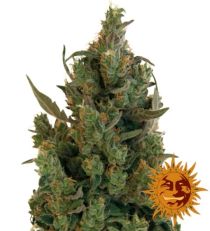 Blue Cheese Feminized - Barney's Farm By Barneys FarmFrom: US$28.38
Blue Cheese Feminized - Barney's Farm By Barneys FarmFrom: US$28.38- THC: 15%-18%
- Yield: Over 600gr/m²
- Flowering Time: 10-12 Weeks
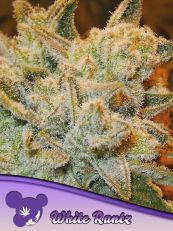 White Runtz Feminized - Anesia Seeds By Anesia SeedsFrom: US$40.26
White Runtz Feminized - Anesia Seeds By Anesia SeedsFrom: US$40.26- THC: Over 25%
- Yield: 400-500gr/m²
- Flowering Time: 8-10 Weeks
Best Seller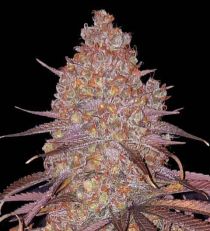 Skywalker OG Feminized 5 Seeds By 420 SeedbankFrom: US$60.72
Skywalker OG Feminized 5 Seeds By 420 SeedbankFrom: US$60.72- THC: 18%-20%
- Yield: 500-600gr/m²
- Flowering Time: 8-10 Weeks
Best Seller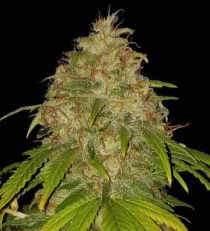 Super Lemon Haze Feminized 5 Seeds By 420 SeedbankFrom: US$60.72
Super Lemon Haze Feminized 5 Seeds By 420 SeedbankFrom: US$60.72- THC: 18%-20%
- Yield: Over 600gr/m²
- Flowering Time: 8-10 Weeks
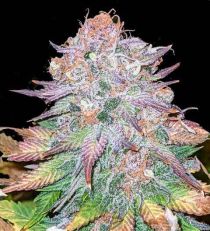 Purple Haze Feminized 5 Seeds By 420 SeedbankFrom: US$60.72
Purple Haze Feminized 5 Seeds By 420 SeedbankFrom: US$60.72- THC: 18%-20%
- Yield: 300-400gr/m²
- Flowering Time: 8-10 Weeks
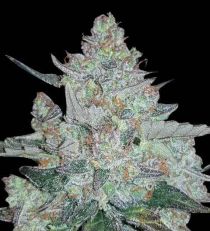 Ice Cream Cake Feminized 5 Seeds By 420 SeedbankFrom: US$60.72
Ice Cream Cake Feminized 5 Seeds By 420 SeedbankFrom: US$60.72- THC: 24%-26%
- Yield: 550-650gr/m²
- Flowering Time: 8-10 Weeks
Best Seller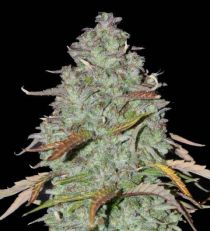 Gorilla Cookies Feminized 5 Seeds By 420 SeedbankFrom: US$64.68
Gorilla Cookies Feminized 5 Seeds By 420 SeedbankFrom: US$64.68- THC: 24%-26%
- Yield: Over 600gr/m²
- Flowering Time: 8-10 Weeks
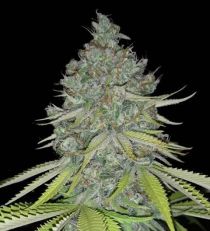 Alien OG Feminized 5 Seeds By 420 SeedbankFrom: Now US$39.47 Was US$60.72
Alien OG Feminized 5 Seeds By 420 SeedbankFrom: Now US$39.47 Was US$60.72- THC: Over 25%
- Yield: Over 600gr/m²
- Flowering Time: 8-10 Weeks
Sale35% OFF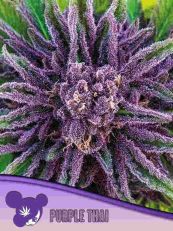 Purple Thai Feminized 3 Seeds - Anesia Seeds By Anesia SeedsFrom: Now US$30.20 Was US$40.26
Purple Thai Feminized 3 Seeds - Anesia Seeds By Anesia SeedsFrom: Now US$30.20 Was US$40.26- THC: 24%-26%
- Yield: Over 600gr/m²
- Flowering Time: 12-14 Weeks
Sale25% OFF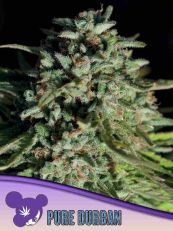 Pure Durban Feminized 3 Seeds - Anesia Seeds By Anesia SeedsFrom: US$37.62
Pure Durban Feminized 3 Seeds - Anesia Seeds By Anesia SeedsFrom: US$37.62- THC: 19%-22%
- Yield: Over 600gr/m²
- Flowering Time: 10-12 Weeks
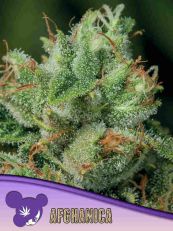 Afghanica Feminized 3 Seeds - Anesia Seeds By Anesia SeedsFrom: US$37.62
Afghanica Feminized 3 Seeds - Anesia Seeds By Anesia SeedsFrom: US$37.62- THC: 24%-26%
- Yield: Over 600gr/m²
- Flowering Time: 8-10 Weeks
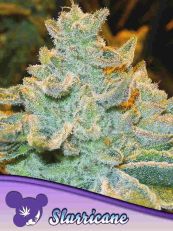 Slurricane Feminized- Anesia Seeds By Anesia SeedsFrom: Now US$30.69 Was US$40.92
Slurricane Feminized- Anesia Seeds By Anesia SeedsFrom: Now US$30.69 Was US$40.92- THC: Over 25%
- Yield: 400-500gr/m²
- Flowering Time: 8-10 Weeks
Sale25% OFF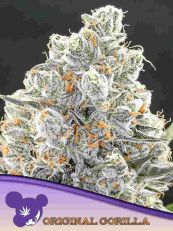 Original Gorilla #4 Feminized- Anesia Seeds By Anesia SeedsFrom: Now US$31.19 Was US$41.58
Original Gorilla #4 Feminized- Anesia Seeds By Anesia SeedsFrom: Now US$31.19 Was US$41.58- THC: Over 25%
- Yield: 550-650gr/m²
- Flowering Time: 8-10 Weeks
Sale25% OFF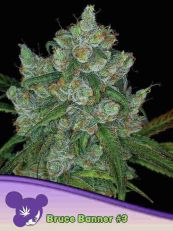 Bruce Banner #3 Feminized- Anesia Seeds By Anesia SeedsFrom: US$42.90
Bruce Banner #3 Feminized- Anesia Seeds By Anesia SeedsFrom: US$42.90- THC: Over 25%
- Yield: Over 600gr/m²
- Flowering Time: 8-10 Weeks
Best Seller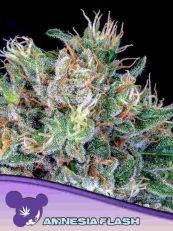 Amnesia Flash Feminized- Anesia Seeds By Anesia SeedsFrom: Now US$29.70 Was US$39.60
Amnesia Flash Feminized- Anesia Seeds By Anesia SeedsFrom: Now US$29.70 Was US$39.60- THC:
- Yield:
- Flowering Time:
Sale25% OFF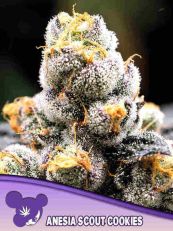 Anesia Scout Cookies Feminized- Anesia Seeds By Anesia SeedsFrom: US$40.92
Anesia Scout Cookies Feminized- Anesia Seeds By Anesia SeedsFrom: US$40.92- THC:
- Yield:
- Flowering Time:
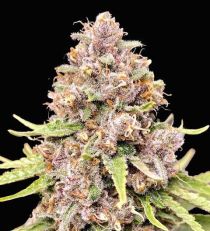 Tropicana Cookies Purple Feminized 5 Seeds By 420 SeedbankFrom: Now US$39.47 Was US$60.72
Tropicana Cookies Purple Feminized 5 Seeds By 420 SeedbankFrom: Now US$39.47 Was US$60.72- THC: Over 22%
- Yield: 450-550gr/m²
- Flowering Time: 8-10 Weeks
Sale35% OFF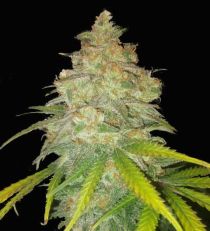 Runtz Feminized 5 Seeds By 420 SeedbankFrom: US$60.72
Runtz Feminized 5 Seeds By 420 SeedbankFrom: US$60.72- THC: 24%-26%
- Yield: 450-550gr/m²
- Flowering Time: 8-10 Weeks
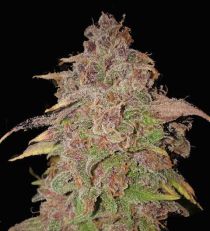 Purple Thai Feminized 5 Seeds By 420 SeedbankFrom: US$60.72
Purple Thai Feminized 5 Seeds By 420 SeedbankFrom: US$60.72- THC: Over 22%
- Yield: 450-550gr/m²
- Flowering Time: 8-10 Weeks
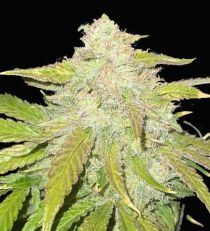 MAC Feminized 5 Seeds By 420 SeedbankFrom: US$60.72
MAC Feminized 5 Seeds By 420 SeedbankFrom: US$60.72- THC: Over 22%
- Yield: 450-550gr/m²
- Flowering Time: 8-10 Weeks
Best Seller
Photoperiod Seeds
Photoperiod plants flower in timing with the seasons and if grown indoors require a light cycle of 18 hours of light and 6 hours of dark to replicate summertime. Then to trigger flowering stage a schedule of 12 hours of light and 12 hours of darkness to replicate then end of summer. Their responsiveness to light is what gives you ultimate control over the the plants life cycle, allowing you to extend the vegetative stage and therefore increase your yield potential. At 420 Seed Bank, we select only the best photoperiod seeds from reputable breeders. Explore our range and experience the difference quality seeds can make in your garden!
Read MoreWhat are photoperiod strains?
Photoperiod strains rely on light to control their growth phases. During early summer when there are around 18 hours of daylight, photoperiod plants will stay in the vegetative stage. As winter approaches and the daylight hours dip down to 12 hours of light per day, this is the trigger to cause the plant to enter the flowering stage. Hence why if you are growing photoperiod seeds indoors, you will need to replicate the changing seasons with an 18/6 light cycle to start with and flipping to a 12/12 light cycle when you want them to flower. This gives you much more control over your plants, as you can theoretically keep them in veg as long or little as you want.
This means that growers can manipulate the plant's initial vegetative growth phase by adjusting the light cycle, essentially dictating when the plant will start producing buds.
If you are confused at all between all of the different types of cannabis, just think of it like this....
Cannabis seeds, can be either photoperiod or autoflowering. You can then have either sativa, indica or hybrid versions of these two types.
What light cycle is best for photoperiod seeds?
The most common light cycle for photoperiod strains is 18 hours of light and 6 hours of darkness during the vegetative stage. Then a light cycle of 12 hours of light and 12 hours of dark during the flowering stage.
Outdoor growers can achieve this by planting in the late spring when the days are approaching their longest length.
When to switch to the flowering stage?
Most growers keep their plants in the veg stage for 5-6 weeks before flipping the lights to 12/12 and initiating the flowering stage. However, the choice is really yours and so you can keep them in veg for as long as you like or until they get as big as you want.
Want one huge plant that takes up your entire tent? Easy: just let the plant grow for longer under the 18/6 lighting schedule.
Want multiple, smaller plants? Just switch to a 12/12 light cycle after a few weeks of vegetative growth and watch them all start flowering at the same time.
The choice is entirely yours, so grow however you like!
What are the advantages of growing photoperiod weed strains?
- Enhanced control over the life cycle: Growers can easily manipulate the size and yield of photoperiod strains by just controlling light cycles, providing an opportunity for precise cultivation outcomes. This type of management allows for customized adjustments tailored to individual plants, optimizing their growth potential and ensuring optimal results.
- Stronger buds: Photoperiod strains usually deliver more powerful effects compared to autoflowering strains. The extended flowering period allows for the development of complex cannabinoid profiles, resulting in more potent and nuanced effects. Whether seeking deep relaxation or uplifting euphoria, photoperiod strains can deliver a more intense experience.
- A wider range of flavors and aromas: Indulge in a wide variety of sensory delights with photoperiod strains, as they offer an expansive array of terpenes. From fruity and sweet to earthy and spicy, each strain carries its own distinct characteristics, providing a truly diverse experience for cannabis connoisseurs.
- They are more forgiving: With autos, if something goes wrong, it goes bad quick. Not the case with photoperiods, as they allow for more time to address any issues that may arise. This makes them ideal for new growers who are still learning the ropes and may make mistakes along the way.
How much do photoperiod strains yield?
On average, photoperiod strains can produce anywhere from 400-600 grams per square meter indoors and up to a kilogram outdoors. With proper care and attention, these yields can bloat even further, but be ready to put in the work!
That really depends on how long you allow your crop to stay in the vegetative growth stage, your skill as a cultivator. Using high-quality equipment, nutrients and growing medium will also help your crop reach its full potential.
Each and every strain has its own unique genetic makeup, meaning some will yield more than others. It also depends on what your target yields are and how much effort you put into training techniques like topping, low-stress training (LST), and supercropping.

